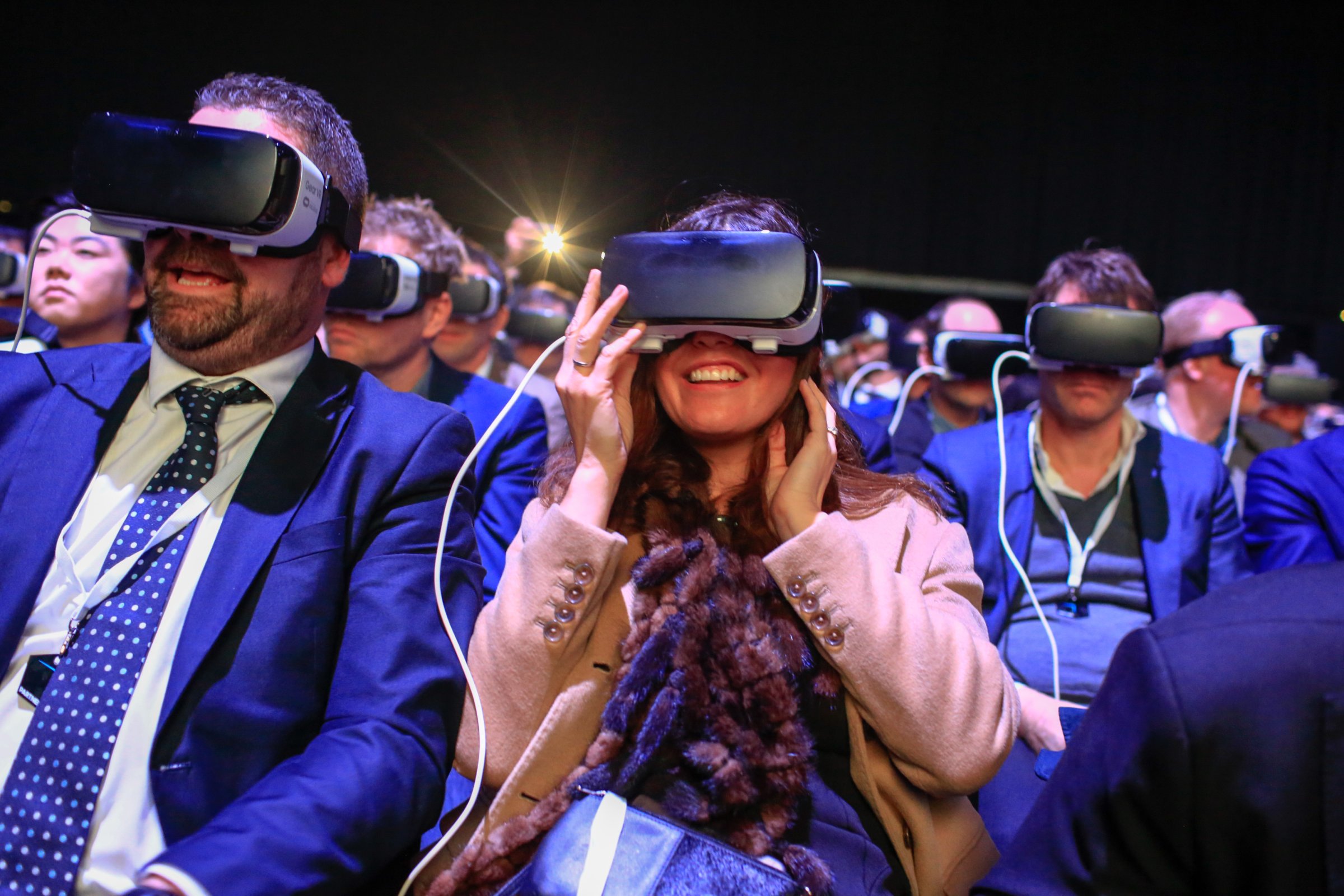
I was in Shenzhen, China last week at the first CE China trade show, which was produced by IFA, the German company that also produces the giant IFA CE trade show in Berlin each September. Shenzhen, which has a population of over 10 million people, is about an hour’s drive from Hong Kong. The city is best known as the place where Foxconn and other factories build consumer products, including the Apple iPhone and iPad, and is often called the “Silicon Valley” of China.
I wanted to attend the IFA China CE Show to specifically to see how the Chinese were going to apply their manufacturing magic to virtual reality (VR) headsets, and to see if they could bring prices down and get new VR headsets out that had broader appeal to mass consumer audiences any time soon. What I found is that the Chinese have really gone to town on making better mobile headsets, which use a smartphone to power a rudimentary VR experience.
Most of the Chinese headsets are made of solid plastic and have simple optics, costing anywhere from $23.95 to $129.95 depending on the quality. You can find many of them on Amazon today and have them shipped to you directly from Shenzhen.
While that is nice and it does allow people to use a better Google Cardboard concept as training wheels for VR, I was most interested to see if the Chinese manufacturers could help get the prices down on the more expensive headsets like the ones from Facebook’s Oculus and HTC’s Vive. The Chinese manufacturers are infamous for aping what they think will be big-selling products and create similar models at cheaper prices when possible.
The Oculus today costs $599 and requires an expensive high-end PC to boot. The HTC Vive is $899 and also needs a PC with an expensive graphics card to handle the rendering of the VR content.
As I expected, the Chinese manufacturers are hard at work creating similar headsets at cheaper prices. Behind the scenes I was made aware of at least three VR headsets very much like the ones from Oculus and HTC that could be brought to market at least $200 to $300 cheaper. However, at the moment they too need an expensive PC. I am told that these lower-cost headsets could be out for this holiday season. However, it is unclear if they will be able to run the existing Oculus- or HTC-compatible content when they ship.
But the Chinese are not content with just creating cheaper versions of today’s high-end VR headsets. They want to innovate in this space and create VR goggles that look more like a set of actual glasses. One such product I saw at the IFA China CE show came from a company called Dlodlo, pronounced “dodo.”
The CEO of Dlodlo told a packed press conference that his company’s Dlodlo Glass V1 VR glasses are still a prototype, but he claimed it would launch by the holiday season. I got to see these glasses at Dlodlo’s booth at the IFA CE China show, and indeed could see that these were actually very early prototypes — mostly a shell design without much of the requisite electronics. But the company insisted that it is far along with its design and assured me that they would be ready for the market soon. I could not get any specific specs from Dlodlo executives about the glasses. Given what I know about how much technology goes into VR headsets, I am highly skeptical that Dlodlo will get this to market this year or even next year.
Indeed, Facebook CEO Mark Zuckerberg recently told developers that a VR headset that looks more like regular glasses is at least 10 years away. There needs to be many breakthroughs in moldable batteries and chip design before we see a product like Zuckerberg envisions.
Yet, the fact that the Chinese are already being very aggressive in creating VR headsets that look more like traditional glasses has to be looked at seriously. This design is the Holy Grail of VR glasses. Revolutionary work by Dlodlo and other Chinese manufacturers could push all headset vendors in this direction. This could lead to less obnoxious and more socially acceptable VR headsets.
In discussions with many Chinese manufacturers at the IFA China CE Show, it became clear that the Chinese want to deliver the technological breakthroughs needed to create VR headsets that are more like glasses and relatively inexpensive as soon as possible. Although this may take a few more years to achieve, the Chinese are in a place to be a major influence on VR technology of the future.
Tim Bajarin is recognized as one of the leading industry consultants, analysts and futurists, covering the field of personal computers and consumer technology. Mr. Bajarin is the President of Creative Strategies, Inc and has been with the company since 1981 where he has served as a consultant providing analysis to most of the leading hardware and software vendors in the industry.
More Must-Reads from TIME
- Cybersecurity Experts Are Sounding the Alarm on DOGE
- Meet the 2025 Women of the Year
- The Harsh Truth About Disability Inclusion
- Why Do More Young Adults Have Cancer?
- Colman Domingo Leads With Radical Love
- How to Get Better at Doing Things Alone
- Michelle Zauner Stares Down the Darkness
Contact us at letters@time.com